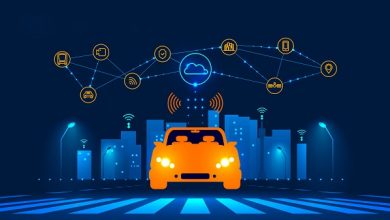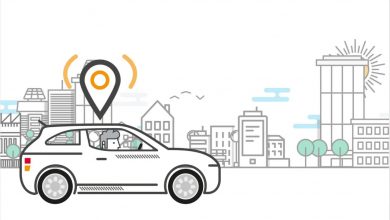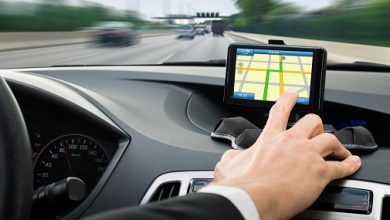Hello Mr Rana you appear to have had an accident …

You’re driving along the highway on a wet rainy afternoon, Coldplay blasting out of the Harman Kardon sound system in your new BMW 5 series. Suddenly, the driver in front slams on his brakes, your car is beeping loudly, and the brakes are being automatically applied by the car to try and prevent a collision. You didn’t have time to react but luckily the car was paying more attention to the traffic in front than you were. There’s a crunching of metal as you come to an abrupt stop and your face is slammed into the airbag. Luckily, thanks to the instantaneous reactions of the cars’ sensors you are shaken but not injured. The car unfortunately didn’t come off quite as lucky.
You hear a ringing tone and then a calming voice says, “Hi Mr. Rana, you appear to have been in an accident, are you ok?” It’s BMW’s incident management service. The car has already alerted them of the accident, notifying them the airbags were deployed as well as the amount of likely damage to the car – all whilst you are still sat in the driver’s seat trying to comprehend what has just happened. The voice waits for your response and then informs you that the emergency services have been alerted and are already on their way to you. “Oh, and don’t worry about the car sir, we have a BMW recovery vehicle on the way to collect your car and take it to Sytner BMW in Nottingham. If you are ok to continue your journey, we can have a replacement BMW waiting for you on arrival at Sytners or we can have it delivered to your home address this evening? And by the way, we’ll liaise directly with your insurer so no need to worry about notifying them…
Cars are becoming ever more technologically advanced. Some have over 90 built-in sensors sending out a whole stream of data back to the car manufacturer. As a result, the car brands are provided with the opportunity to deliver additional innovative and comprehensive end-to-end motoring services. This is not a 2025 or 2030 scenario; this is happening today.
Whilst this is great customer service for the driver it’s potentially a significant threat to the insurer who is at risk of losing control of the claims process and potentially becoming a faceless utility. For the OEM and its dealer network, this is a great opportunity to secure more bodyshop revenue as well as an opportunity to sell more cars.
The current motor insurance market was already at risk of being disrupted due to the evolving technologies now incorporated into modern-day cars but as a result of the pandemic lockdowns last year, consumers are questioning why they are paying hefty annual premiums when their cars are spending the majority of their time on the driveway and with the change in working patterns, people will be commuting less in the coming years.
Most western insurers are now looking to launch pay-per-use policies for the mass market and there appears to be a significant move away from ‘Pay how you drive’ where driving behavior was a major underwriting factor as well as a major trust issue between policyholders and insurers. The telematics-based approach is nothing new, I recall discussing the model with Norwich Union (now Aviva) over 20 years ago. Even today, most insurers simply don’t have the capabilities or flexibility within their core policy management/claims platforms to provide the fully integrated, digital customer experience that is being increasingly expected by consumers.
InsurTech’s such as Metromile and Root on the other hand are able to rapidly launch new propositions and attract billion dollar plus valuations. It’s inevitable that the retail auto insurance industry is going to change quite dramatically over the coming years due to a number of factors:
- Reduced vehicle usage resulting in decreasing number of accidents
- Technology in modern cars reducing the likelihood or severity of accidents
- Level of technology sophistication, resulting in damaged vehicles having to be repaired through main dealers at greater cost rather than the independent networks preferred by the insurers
- Younger drivers moving away from the owned vehicle to shared mobility business models
- The rapid move to electric vehicles – Jaguar recently announced that its entire UK portfolio will be based on their EV platform by 2025 – that’s only 4 years away
- As cars become more connected the increasing threat of cyber-attacks on the vehicle itself, introducing new factors in the determination of accident cause
- OEMs increasingly accepting that in the future they are likely to transition into mobility service providers rather than retailers of vehicles
- Subscription based mobility models where consumers can swop and change vehicles daily depending on their requirements that day or that week
- Insurance cover will need to be embedded either into the cost of the journey or into the subscription fee
Insurers are developing a range of digital customer journey solutions that can fill the gaps and help them deliver more comprehensive, end-to-end digital experiences for their clients through integrating with the new generation of dynamically generated data sources. Looking forward, it’s clear that the legacy of Covid-19 in the automotive sector will be extensive. The automotive industry went through an enormous upheaval in the last year. Primarily due to Covid-19, worldwide auto sales fell by 16% in 2020. Some countries saw even more significant impacts — in the UK, new car sales were down 97% in April 2020, and purchases dropped by 29% in November 2020 as a result this has accelerated the OEM appetite for actively looking at how they can generate revenues in the future if they are not in the ‘selling cars’ business. Volvo are already talking about the vehicle being like a giant smartphone and therefore a platform for providing a range of services to the consumer and generating a range of new revenue streams for itself in the process. No one spends over £1,000 on a smartphone to simply make calls…
BMW was looking at journey by journey insurance policies over 5 years ago and even facilitating the booking of train tickets if that was a quicker option than the vehicle being driven from saying Nottingham to London with the electronic train ticket being transferred to its NFC enabled intelligent key. Today with smartphone-based access we don’t even need the key.
Whilst in-car technologies like lane departure control and dynamic cruise control will help reduce the number of accidents, the cost of repair will inevitably rise quite dramatically. In addition with the increasing move towards OEMs providing consumers with the option to configure their cars with a range of extras, it’s becoming difficult for underwriters to understand exactly what safety-related features are available on individual cars making the underwriting more complex
Turning up the voltage on electrification
Over the next few years, increasing public awareness of climate change will combine with regulatory efforts to reduce fossil fuel consumption, driving change in how cars are produced and used. Electric vehicles will become commonplace, particularly in cities where expanding low emission zones push out particulate-generating combustion engines.
In many ways, the electric revolution is already here — while global car sales slumped last year, approximately 40% more electric cars were bought globally than in 2019. Until now, the electric car industry has been dominated by a single name, Tesla, but the sector is becoming increasingly more crowded; with GM committing to an all-electric line-up by 2035, Volvo announced that its entire model line-up would be fully electric by 2030 and Jaguar Land Rover’s complete model range by 2025.
In the coming decade, as new infrastructure facilitates greater uptake of EVs and traditional manufacturers continue to electrify their vehicles, the EV-owning market demographic will explode in size. Deloitte expects EVs to account for 32% of new car sales by 2030.
Motor insurance providers need to pay careful attention to this shift because it exposes them to both new risks and opportunities. For one thing, electric vehicles are likely to come with more advanced technology to log driver behavior data — that’s one of the reasons why Tesla has created its own insurance package, providing a significant opportunity to implement customer-specific policy pricing.
Simultaneously, EV premiums are typically higher than those of other cars, demonstrating that insuring an EV generally is riskier for insurers than being bound by a policy for a comparable gas-powered vehicle. This is because EVs are more expensive to repair — few workshops are qualified to fix them, parts are costly, and unibody construction techniques lead to more cars being totaled following low-speed crashes.
The impact of connectivity
A connected car is a vehicle that’s able to exchange data with the outside world. There are different types of connectivity — for example, a connected car might send speed and position data to the infrastructure around it or communicate potential hazards to other connected vehicles nearby.
Analysts expect that 70% of worldwide light truck and car sales will qualify as “connected” by 2023, equating to approximately 76 million units per year. The rapidly expanding network of interconnected traffic should be of vital interest to insurers as a driver’s risk profile may change dramatically depending on their vehicle’s connectivity.
Take the example of bi-directional data being fed into a collision-prevention system — this could dramatically reduce the likelihood of multi-car crashes under certain conditions, potentially allowing insurers to mark down their premiums and gain an advantage over competitors. Simultaneously, repair and warranty costs could fall as car sensors feed data to manufacturers who can then proactively recall vehicles for preventative care.
On the other hand, increased connectivity could raise privacy issues and the risk of cybersecurity attacks on inter-connected fleets, leading to accidents or cars being remotely disabled by hackers. When selling policies to drivers of connected vehicles, insurers need to consider how liability will work if this occurs.
New technology enables new driving habits
Another source of connectivity-related risk for motor insurers stems from the new driving habits that so-called “smart” cars facilitate. Because connected-car usage can be monitored remotely, some OEMs are turning to subscription driving, servicing, and financing business models.
This new generation of automotive hire agreements will be based on flexible vehicle use rather than static, multi-year agreements, requiring insurers to re-evaluate the risks associated with driving. As these arrangements become more popular, consumers and manufacturers will demand “journey-by-journey” style insurance products that facilitate on-demand car use, and as vehicle manufacturers gain access to increasing amounts of data, will this open up new opportunities for them to broaden their offerings to incorporate introduce new services such as integrated claims management to ensure that vehicles stay within their networks.
The best way for automotive organisations to address emerging risk is to search out sources of relevant, actionable data to produce better on-demand insurance products. For example, insurers can look to the telemetric data-producing smartphones that are already replacing black box devices and on-board diagnostic dongles.
Conclusion
Mobility and travel are constantly changing, and we’ve entered a crucial period of flux for the automotive and insurance industries. To stay ahead of the pack, stay mindful of the emerging risks and critical trends we’ve discussed here.
If you’re operating in the automotive space, either as a manufacturer, insurer, or as part of an adjacent industry business, I’d love to hear your thoughts.
Author:

Manjit Rana
Ingenin
Manjit is highly regarded as an industry thought leader and one of the pioneers of the InsurTech movement. With over 30 years of experience of working in the insurance space alongside co-founding a number of start-up businesses and driving internal innovation for large global corporates, Manjit’s advice is firmly grounded and his role as Advisor to some of the most exciting InsurTech disruptors.
Published in Telematics Wire





